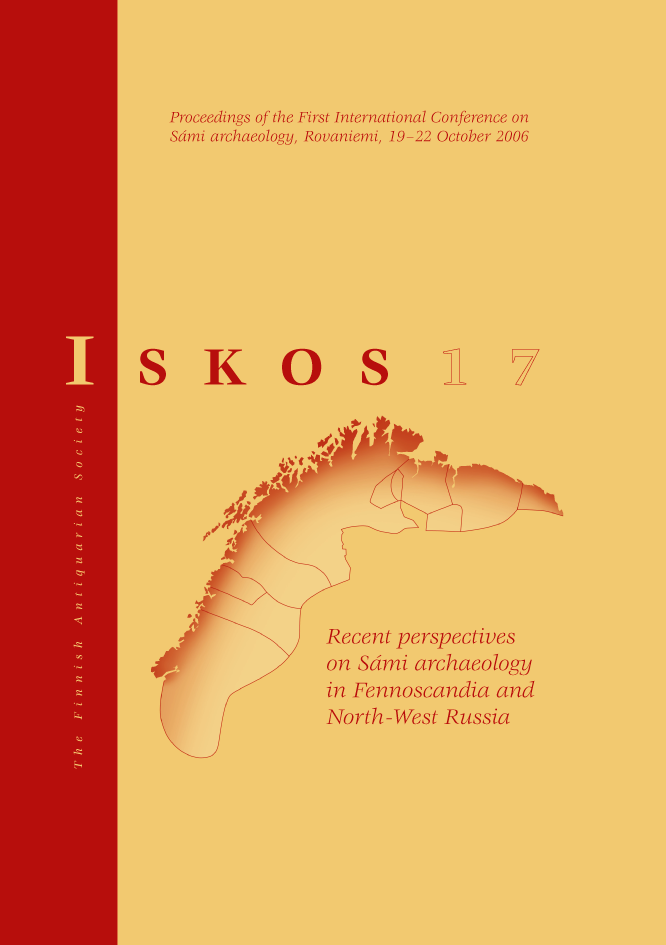Discussion regarding the south-east origin of the Sámi
Abstract
The area of the Sámi has shrunk as time has passed. The question of their origin is topical especially in areas where there is no longer any Sámi population today. Their ancient area can be outlined by toponymical data. Sámi place-names cover Fennoscandia, as well as partly also the neighboring regions in NW Russia. Archaeological data can be linked to toponymy, but only under certain preconditions. The very important prerequisite is that the spatio-temporal dynamics in layers of culture will coincide with the dynamics in the development of toponymy.
Russian researchers divide the place-names of NW Russia into four successive layers: Volga (Volga-Oka), Sámi, Baltic-Finnish, and Russian. The two last-mentioned strata are generally correlated with the Russian peasant culture (since ca 1300 AD) and the culture which according to ceramics in Ladoga burial mounds can be dated to late medieval times (900–1100 AD).
At Lake Onega in SE Karelia, altogether nine successive cultural types have been studied. Here the most ancient layer of place-names, i.e., the Volga layer, can be in general correlated with the Net ("Textile") Ware culture (ca. 1600–500 BC). Its origins can be traced to the upper Volga region because the preceding Late Eneolithic culture has different dynamics of formation.
Sámi place-names correspond in general with the Iron Age local cultures of the Anan'ino layer (ca. 500 BC – 1500–1300 AD), but partly also with the aceramic culture (ca. 900–1400 AD). The earliest Sámi place-names revealed by toponymists are found near the SE border of the area in question (i.e. the Vologda region and the southern Arhangelsk region). In other words, they are in the area of the Pozdnekargopolskaja culture in Karelia. The mixed culture of SE Sámi was formed of the substrate southern (the upper Volga) and alien eastern (the Kama) component. As far as other areas inhabited by Sámi speakers are considered, the substrate components may be different.




